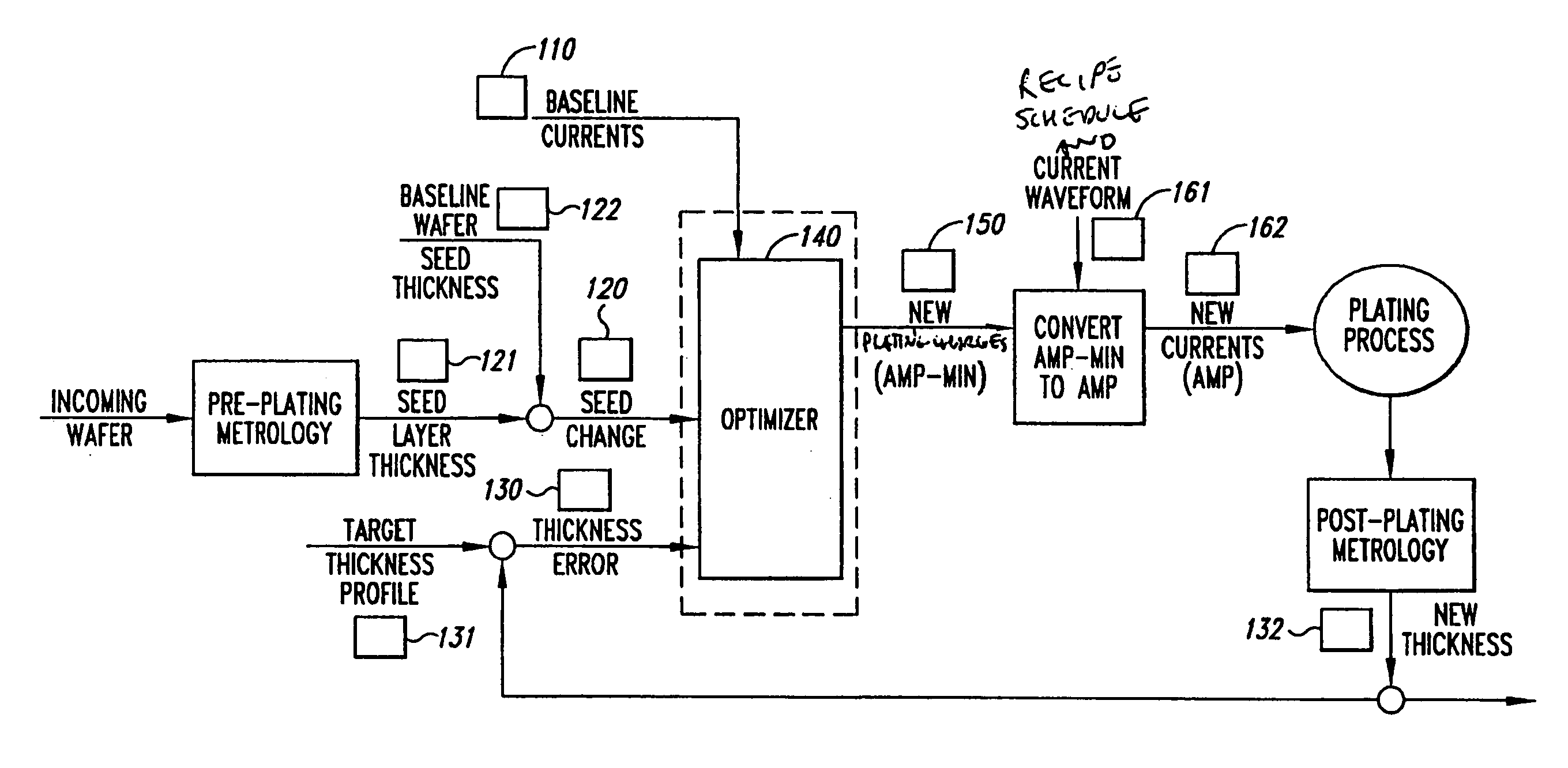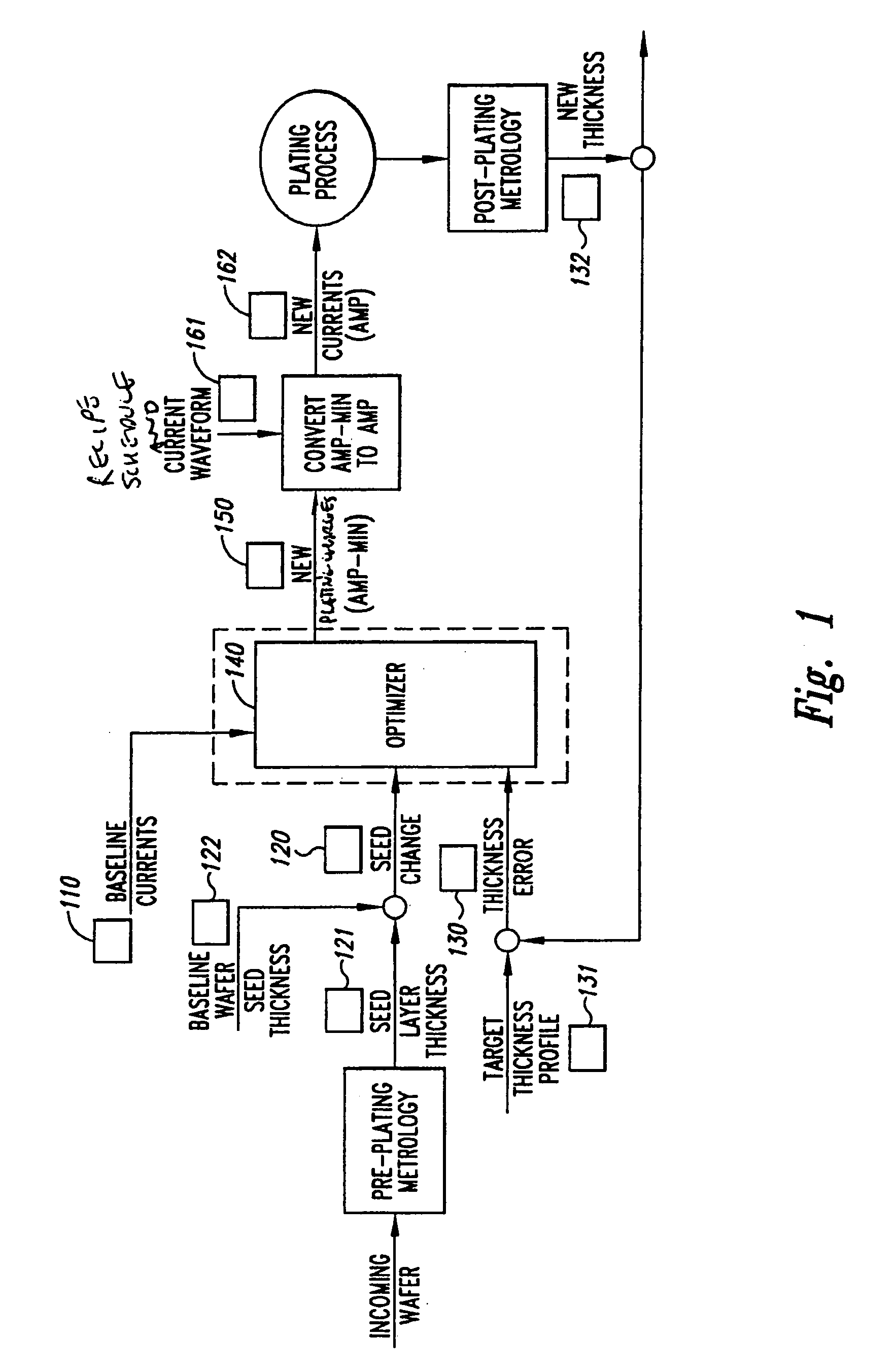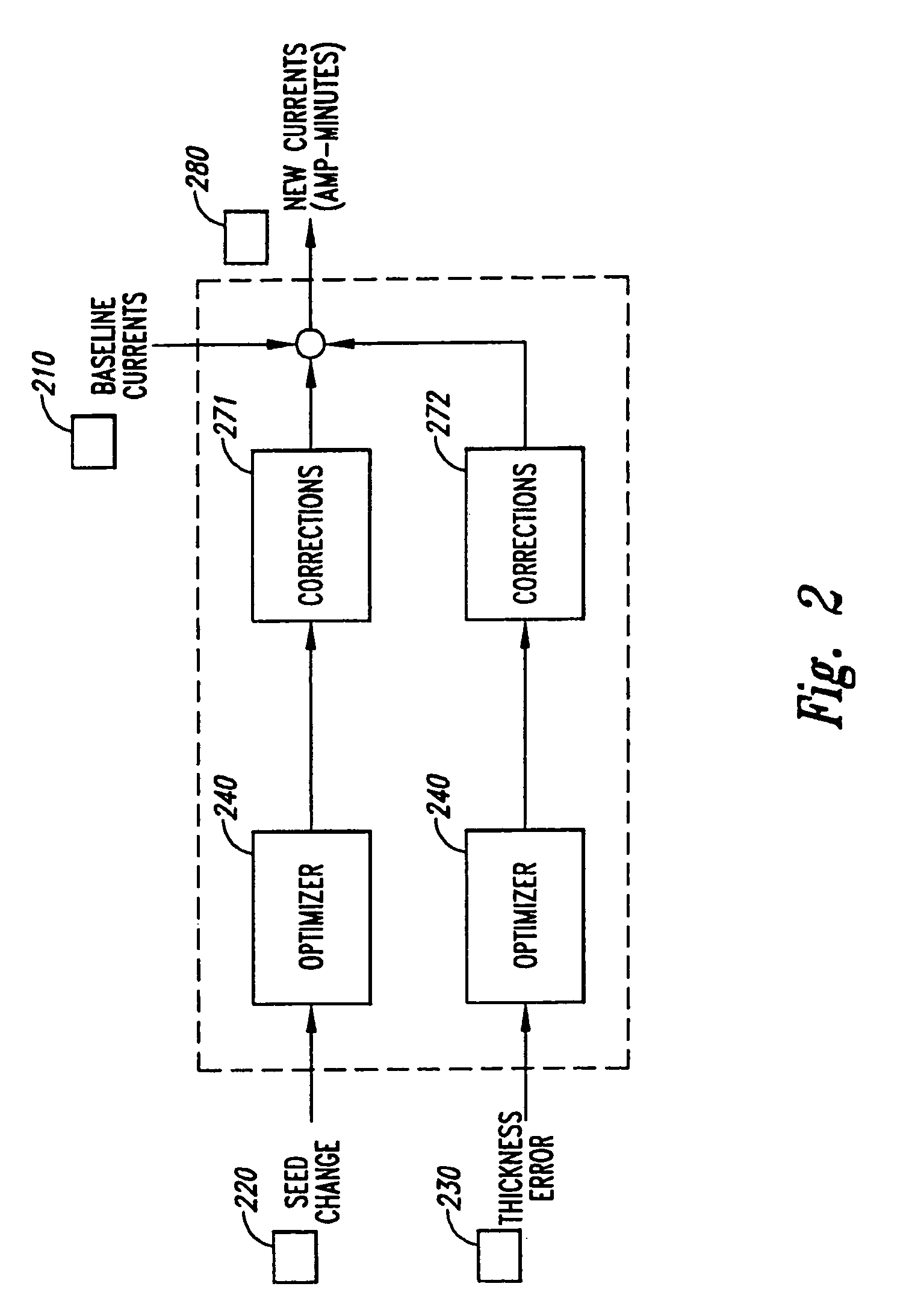Tuning electrodes used in a reactor for electrochemically processing a microelectric workpiece
a micro-electric workpiece and electrode technology, applied in the direction of electrolysis components, vacuum evaporation coatings, coatings, etc., can solve the problems of manual trial and error, affecting the uniformity of the desired process, and the inability to determine the electrical parameters of each electrode in the array to achieve the desired process uniformity, etc., to achieve the effect of reducing labor costs, high uniformity, and increasing output quality and throughpu
- Summary
- Abstract
- Description
- Claims
- Application Information
AI Technical Summary
Benefits of technology
Problems solved by technology
Method used
Image
Examples
Embodiment Construction
[0033] A facility for automatically selecting and refining electrical parameters for processing a microelectronic workpiece (“the optimizer”) is disclosed. In many embodiments, the optimizer determines process parameters affecting the processing of a round workpiece as a function of processing results at various radii on the workpiece. In some embodiments, the optimizer adjusts the electrode currents for a multiple electrode electroplating chamber, such as multiple anode reaction chambers of the Paragon tool provided by Semitool, Inc. of Kalispell, Mont., in order to achieve a specified thickness profile (i.e., flat, convex, concave, etc.) of a coating, such as a metal or other conductor, applied to a semiconductor wafer. The optimizer adjusts electrode currents for successive workpieces to compensate for changes in the thickness of the seed layer of the incoming workpiece (a source of feed forward control), and / or to correct for non-uniformities produced in prior wafers at the anod...
PUM
| Property | Measurement | Unit |
|---|---|---|
| Fraction | aaaaa | aaaaa |
| Fraction | aaaaa | aaaaa |
| Fraction | aaaaa | aaaaa |
Abstract
Description
Claims
Application Information
 Login to View More
Login to View More - R&D
- Intellectual Property
- Life Sciences
- Materials
- Tech Scout
- Unparalleled Data Quality
- Higher Quality Content
- 60% Fewer Hallucinations
Browse by: Latest US Patents, China's latest patents, Technical Efficacy Thesaurus, Application Domain, Technology Topic, Popular Technical Reports.
© 2025 PatSnap. All rights reserved.Legal|Privacy policy|Modern Slavery Act Transparency Statement|Sitemap|About US| Contact US: help@patsnap.com



